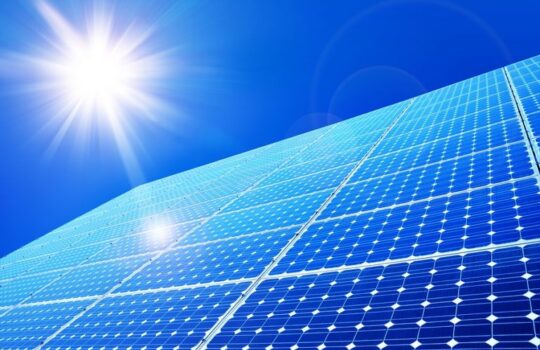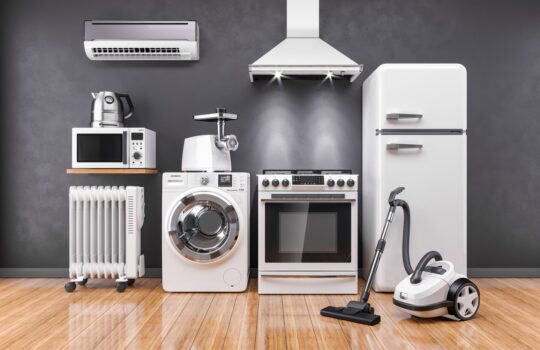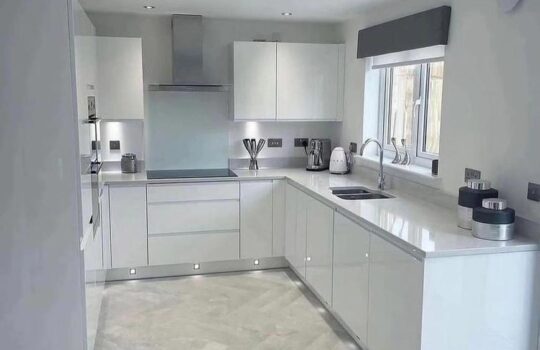Air Fryer vs. Convection Oven: Which is Better? 2025
In today’s kitchen appliance showdown, we’re tackling a common dilemma faced by home cooks everywhere: should you invest in an air fryer or a convection oven? Both promise crispy, evenly cooked foods with less oil than traditional frying, but they differ in significant ways. This comprehensive guide will help you understand the key differences, benefits, and drawbacks of each appliance so you can make the best choice for your cooking needs.
Understanding the Technology
How Air Fryers Work
Air fryers are compact countertop appliances that use rapid air technology to circulate hot air around food. A powerful fan positioned above a heating element blasts hot air downward, creating a high-intensity cooking environment in a small space. This design creates a “tornado” effect that quickly crisps the exterior of foods while cooking them through.
The concentrated heat and strong air circulation allow air fryers to:
- Cook food 20-30% faster than conventional ovens
- Create a crispy exterior similar to deep-fried foods
- Use up to 80% less oil than traditional frying methods
How Convection Ovens Work
Convection ovens, whether standalone or built into your range, use fans to circulate hot air throughout the cooking chamber. Unlike traditional ovens that heat primarily through radiation, convection ovens add a fan (and sometimes an additional heating element) to move hot air around the food.
The more even heat distribution in convection ovens:
- Reduces cooking time by approximately 25%
- Eliminates hot spots and promotes even browning
- Enables better multi-rack cooking
Size and Capacity Comparison
Air Fryer Dimensions and Cooking Space
Most air fryers have a relatively small footprint, typically measuring:
- 8-16 inches wide
- 13-16 inches tall
- 8-15 inches deep
However, their actual cooking capacity is limited:
- Compact models: 2-3 quarts (ideal for 1-2 people)
- Medium models: 3-5 quarts (suitable for 2-4 people)
- Large models: 6-10 quarts (can handle family meals)
Newer basket-style air fryers offer more cooking space than older models, while air fryer ovens provide multiple racks for increased capacity.
Recommended; Get Quality Airfryers Here
Convection Oven Size and Cooking Capabilities
Convection ovens come in countertop versions or as full-size built-in appliances:
- Countertop models typically offer 0.6-1.2 cubic feet of space
- Full-size convection ovens provide 4-6 cubic feet of cooking room
This larger capacity allows convection ovens to:
- Cook multiple items simultaneously on different racks
- Accommodate large roasts, entire chickens, or commercial baking sheets
- Handle holiday cooking and entertaining for large groups
Performance Face-Off
Cooking Speed
Air fryers generally heat up and cook faster than convection ovens due to their smaller size and concentrated heat flow. For quick meals, an air fryer can save valuable time:
- Air fryers typically preheat in 2-3 minutes
- Convection ovens usually require 5-15 minutes to preheat
For cooking times:
- Air fryer: 12-15 minutes for frozen french fries
- Convection oven: 18-22 minutes for the same portion
Cooking Results and Food Quality
Both appliances excel at creating crispy exteriors while maintaining moisture inside. However, there are notable differences:
Air fryers excel at:
- Creating extra-crispy textures on breaded foods
- Reheating leftovers that should stay crispy (like pizza or fried foods)
- Cooking small batches of frozen convenience foods
Convection ovens shine with:
- More even browning on baked goods
- Better results for roasted meats and vegetables
- More consistent results for delicate items like cookies or pastries
According to a study published in the Journal of Food Science, foods cooked in air fryers can achieve similar texture to fried foods with significantly less fat absorption.
Energy Efficiency and Operating Costs
Power Consumption Comparison
Air fryers typically use less electricity than convection ovens due to their smaller size:
- Most air fryers use 1,200-1,500 watts
- Countertop convection ovens use 1,400-1,800 watts
- Full-size convection ovens use 2,500-5,000 watts
For a 30-minute cooking session:
- Air fryer: Approximately 0.75 kWh
- Convection oven: 1.25-2.5 kWh
According to the U.S. Department of Energy, selecting the right-sized appliance for the cooking task can significantly reduce energy usage in the kitchen.
Versatility and Cooking Applications
What Air Fryers Do Best
Air fryers excel at foods that benefit from intense, dry heat:
- Frozen finger foods (fries, chicken nuggets, mozzarella sticks)
- Wings and other small cuts of meat
- Roasted vegetables in small batches
- Reheating crispy leftovers
Many newer models also offer additional functions like dehydrating, roasting, and even baking, though with limitations due to their size.
Convection Oven Versatility
Convection ovens offer greater versatility due to their larger size and temperature control:
- Baking bread, cookies, and pastries
- Roasting large cuts of meat
- Cooking casseroles and multi-component dishes
- Multi-rack baking for large batches
Professional chefs typically prefer convection ovens for their precision and consistent results across various cooking techniques.
Maintenance and Cleaning
Air Fryer Cleaning Process
Most air fryers have removable, non-stick components that are relatively easy to clean:
- Baskets and trays are often dishwasher-safe
- The compact size means fewer surfaces to clean
- Some models have parts that require hand washing
However, the mesh baskets can collect food particles in their crevices, requiring occasional deep cleaning.
Convection Oven Maintenance
Convection ovens typically require more effort to clean:
- Full-size ovens may have self-cleaning features
- Countertop models often have removable crumb trays
- The larger interior surface area means more space to clean
- Fans and heating elements may need periodic deep cleaning
A survey by Consumer Reports found that ease of cleaning was a top consideration for kitchen appliance satisfaction.
Cost Considerations
Initial Investment
The price point between these appliances varies significantly:
- Basic air fryers: $50-100
- Premium air fryers with additional functions: $100-300
- Countertop convection ovens: $80-250
- Built-in convection ovens: $700-3,000+
Long-term Value Assessment
When considering long-term value:
- Air fryers are ideal for individuals, couples, or small families who frequently cook small batches of crispy foods
- Convection ovens offer better value for large families, serious bakers, or those who entertain frequently
Making Your Decision: Air Fryer or Convection Oven?
Best For Small Spaces and Quick Meals
Choose an air fryer if:
- You have limited counter space
- You primarily cook for 1-2 people
- You frequently prepare frozen convenience foods
- You want the crispiness of fried food with minimal oil
- Quick cooking time is your priority
Best For Versatility and Volume Cooking
Choose a convection oven if:
- You cook for a larger family
- You bake bread or pastries regularly
- You need to cook multiple items simultaneously
- You prepare large cuts of meat
- You want one appliance that can handle most cooking tasks
The Verdict: Can You Benefit From Both?
Many cooking enthusiasts find value in having both appliances. A convection oven serves as the kitchen workhorse for everyday meals and baking, while an air fryer provides quick cooking for smaller portions and specialty items that benefit from its intense heating method.
According to kitchen design experts, modern kitchens are increasingly incorporating specialized cooking zones with task-specific appliances to maximize efficiency and cooking results.
For those with space and budget constraints, a convection toaster oven with air fry functionality offers a compromise that combines features of both appliances, though with some performance tradeoffs compared to dedicated units
But at the end of the day the best choice depends on your cooking habits, available space, and the types of foods you prepare most frequently. Both appliances offer significant benefits over conventional ovens in terms of cooking speed and results—choosing between them is largely a matter of matching their strengths to your specific needs.








